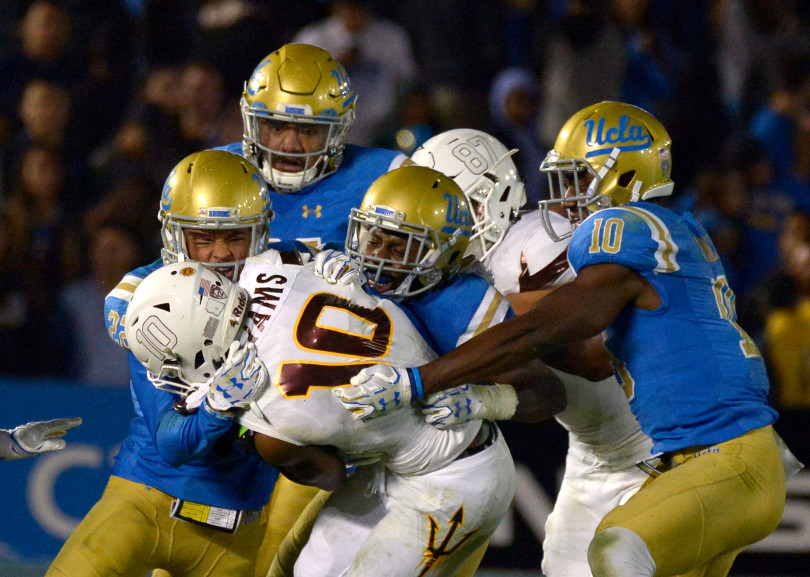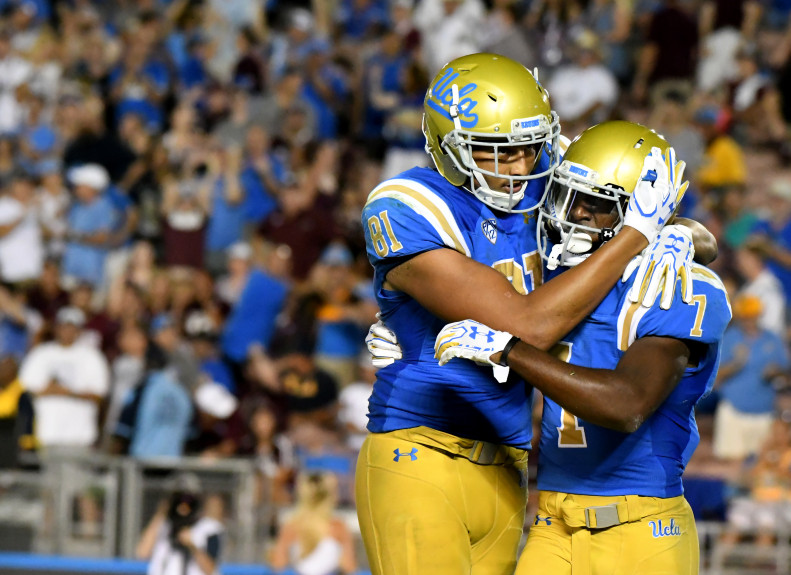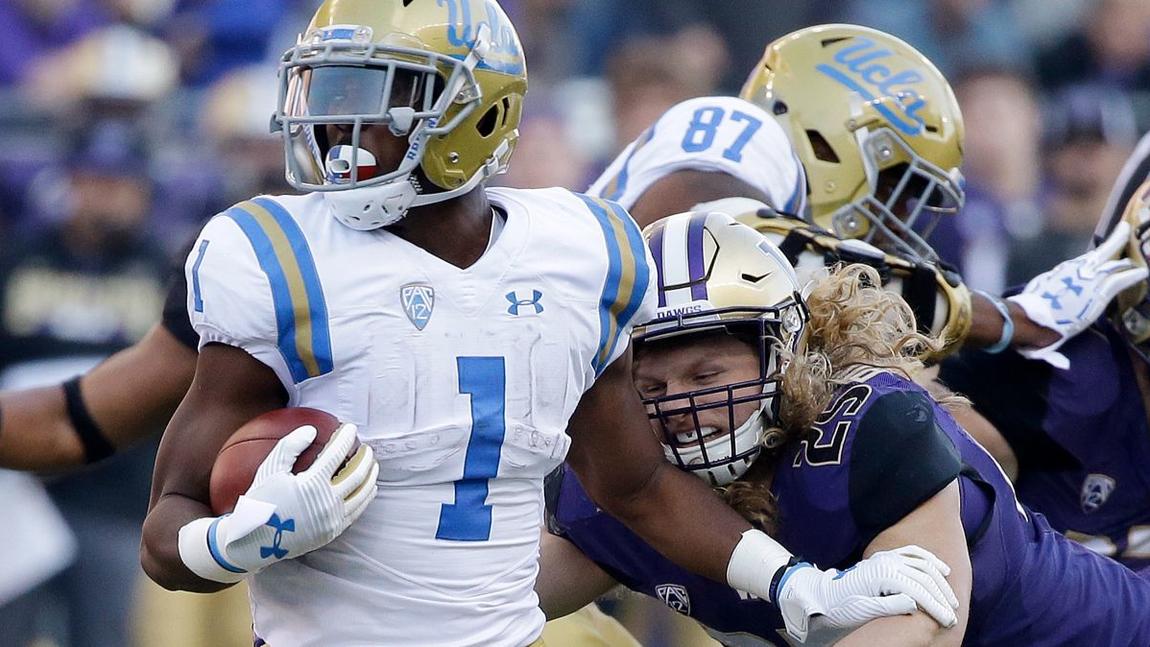
UCLA may be losing quarterback Josh Rosen and the entire left side of its offensive line from center Scott Quessenberry (52), left guard Najee Toran (69) and left tackle Kolton Miller (77) if Miller decides to leave school early after a strong redshirt junior year. (Photo by David Madison/Getty Images)
The reality was just starting to hit Kenny Young this week. Tuesday will be the final time he puts on his UCLA jersey for a game.
“It’s creeping in,” the New Orleans native admitted Saturday.
The Chip Kelly era is steadily creeping in as well as the new head coach has hired three new defensive coaches and signed his first group of commits. Young was a critical piece for the Jim Mora era, but a new chapter of UCLA football awaits on the other side of the Cactus Bowl.
Here’s a look at the losses UCLA is facing, what their impact to the team was this year and an early look at what could lie ahead with Kelly at the helm. Each position group is broken down by seniors (in yellow) and non-seniors (in blue). Quarterback is not included as the magnitude of the potential loss (Josh Rosen) is pretty obvious if Rosen decides to forgo his senior year.




